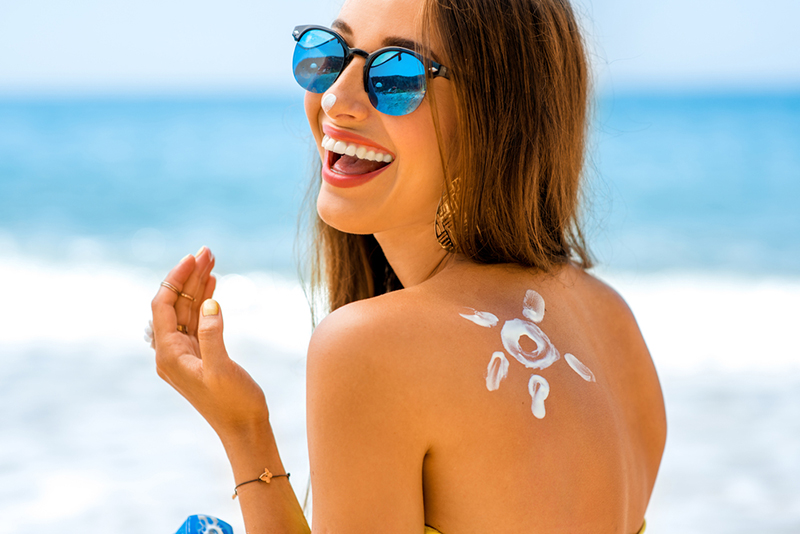The sunscreens we buy have guidelines to tell us how often we should reapply but now researchers at the Queensland University of Technology (QUT) are working on a patch that could tell us exactly when it’s time to slip, slop, slap.
They’re trialling the stick-on patch, which is sensitive to UV light, with the hope it will help people avoid getting sunburnt. Doctor Elke Hacker told 9 News it could be “a game changer for Queenslanders”.
It would essentially take the guess work out of reapplying so your skin is always protected. No more wondering if it’s time to reapply after your layer of sunscreen is compromised by a dip in the ocean.
How does it work?
It’s a sticker about the size of a 50 cent piece that can be placed anywhere on your body (much like a Nicotine patch) and as sunscreen protection wears off, the patch changes colour.
“It becomes a bright colour indicating your suncreen’s no longer working … and it’s time to reapply or get out of the sun,” Dr Hacker explained.
The patches could be available on shelves as early as next year but they’ll have to undergo rigorous testing first to ensure they can perform in the harsh Australian sun.
“It’s really critical that there is some testing regulation done when we’re talking about someone’s sun safety,” Dr Hacker said.
Reducing the risk of skin cancer
No-one likes enduring sunburn but red skin is not the main target of the patch. Researchers want to reduce the number of Australians being diagnosed with potentially deadly skin cancers like melanoma. The statistics paint a pretty bleak picture and indicate our nation could benefit from being a little more sun smart.
According to the Cancer Council:
- 75 per cent of Queenslanders aged 18 to 24 get sunburnt every year
- Two in three Australians will be diagnosed with a skin cancer by the time they turn 70
- Skin cancers account for around 80 per cent of all newly diagnosed cancers
- The incidence of skin cancer in Australia is one of the highest in the world, two to three times the rates in Canada, America and the United Kingdom.
UV exposure data sent to your phone
The university wasn’t the first with the idea of a UV-sensitive patch. There are others working on similar ideas. L’Oreal actually launched its own version in October as part of a marketing campaign.
The cosmetic company has called it “My UV Patch” and is offering them free to customers who purchase a specific product. It claims the electronic patch has “the latest technology … to track your UV exposure”.
“Consumers will be able to take a photo of the patch and upload it to the … mobile app, which analyses the varying photosensitive dye squares to determine the amount of UV exposure the wearer has received,” L’Oreal explained in a statement.
There’s been some buzz among tech heads about the product. The Australian’s technology reporter has taken it for a test run. If you’re interested, check out his review.
And, if you’d like to support QUT’s research team, it needs volunteers to carry out trials. To take part in the study email [email protected] or phone 07 3138 9674. They’re looking for people aged between 18 and 30.





